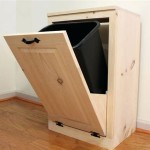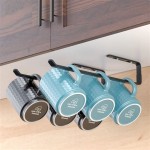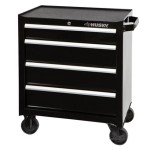How to Get Paint Off Of Cabinets
Removing paint from cabinets can be a challenging task, particularly when dealing with stubborn layers or delicate finishes. However, with the right techniques and tools, it's possible to achieve a clean and restored surface without damaging the underlying material. This article will guide you through the process of removing paint from cabinets effectively, providing a step-by-step approach and essential tips for success.
Assess the Paint and Cabinet Material
Before embarking on any paint removal method, it's crucial to assess the type of paint and the material of your cabinets. Understanding these factors will determine the best course of action and prevent potential damage. For example, oil-based paints tend to be more durable and require more aggressive removal techniques, while water-based paints are generally easier to remove. Additionally, softwoods, such as pine, are more susceptible to scratches and gouges than hardwoods like oak or maple.
If you are unsure about the type of paint or cabinet material, you can conduct a small test in an inconspicuous area. Apply a small amount of paint remover or scraping tool and observe the reaction. This will give you an idea of the paint's adhesion and the cabinet's susceptibility to damage.
Choose the Appropriate Paint Removal Method
Several methods can be employed for removing paint from cabinets, each with its own advantages and disadvantages. The most common techniques include:
1. Chemical Paint Strippers
Chemical paint strippers are highly effective at dissolving paint layers and are often the preferred option for removing multiple layers or stubborn paint. They come in various strengths and formulations, so choosing the right one for your specific situation is essential. Always wear protective gear, such as gloves, goggles, and a respirator, when using chemical strippers. Apply the stripper according to the manufacturer's instructions, and be careful not to let it sit on the cabinet surface for too long, as it can damage the underlying wood.
2. Heat Guns or Heaters
Heat guns or heaters can soften paint, making it easier to scrape or peel off. This method is particularly effective for older, dried-on paint layers. It's important to use caution when using heat as it can cause burns or ignite flammable materials. Apply heat gradually and move the gun or heater continuously to avoid damaging the cabinet surface. Use a scraper or putty knife to remove the softened paint.
3. Sanding
Sanding is a more gradual approach to paint removal, best suited for thin layers or when dealing with delicate surfaces. Use progressively finer grits of sandpaper, starting with a coarser grit for initial removal and moving to a finer grit for smoothing the surface. Avoid sanding too aggressively, as it can create scratches or damage the wood.
Prepare the Cabinets for Removal
Once you've chosen the appropriate method, prepare the cabinets for paint removal. This involves masking off surrounding areas to prevent damage or accidental paint removal. Cover countertops, floors, and other surfaces with drop cloths or plastic sheeting. Remove cabinet doors and drawers for easier access and safer handling. Securely hold the cabinet doors or drawers to prevent them from slipping during the paint removal process.
Before applying any paint removers or using heat guns, it's essential to clean the cabinet surfaces with a damp cloth to remove dust and debris. This will ensure that the removal process is more effective and prevents contaminants from being embedded in the wood.
Carry Out the Paint Removal Process
After preparing the cabinets, carefully follow the chosen paint removal method. For chemical strippers, apply a generous layer to the affected areas and let it sit for the recommended time. Use a scraper or putty knife to remove the softened paint. For heat guns, apply heat gradually and move the gun continuously to avoid damaging the surface. Use a scraper or putty knife to remove the softened paint. When sanding, use a sanding block or orbital sander with progressively finer grits. Follow the grain direction for a smooth finish.
Remember to wear protective gear throughout the process, and work in a well-ventilated area. Dispose of any leftover paint remover or sanding dust responsibly.
Clean and Finish the Cabinets
Once the paint is removed, clean the cabinets thoroughly with a damp cloth to remove any residue. Allow the cabinets to dry completely before applying any finishing treatments. You can choose to stain, paint, or seal the cabinets to achieve the desired look. Be sure to use compatible finishing products based on the cabinet material and your desired outcome. Finally, reassemble the cabinet doors and drawers, ensuring all hardware is securely attached.

How To Strip Paint Off Kitchen Cabinets And Furniture

How To Fix A Bad Kitchen Cabinet Paint Job The Wood Whisperer Youtube

How To Strip Paint From Cabinets Angi

How To Paint Laminate Cabinets Without Sanding The Palette Muse

How To Get Paint Off Kitchen Cabinets

Diy Kitchen Cabinet Painting The Cheap Easy Way

How To Paint Kitchen Cabinets Without Sanding Or Priming

Refinish Kitchen Cabinets With Kilz Restoration Primer

Painting Cabinets How The Pros Do It Paper Moon

How To Paint Laminate Cabinets Without Sanding The Palette Muse








